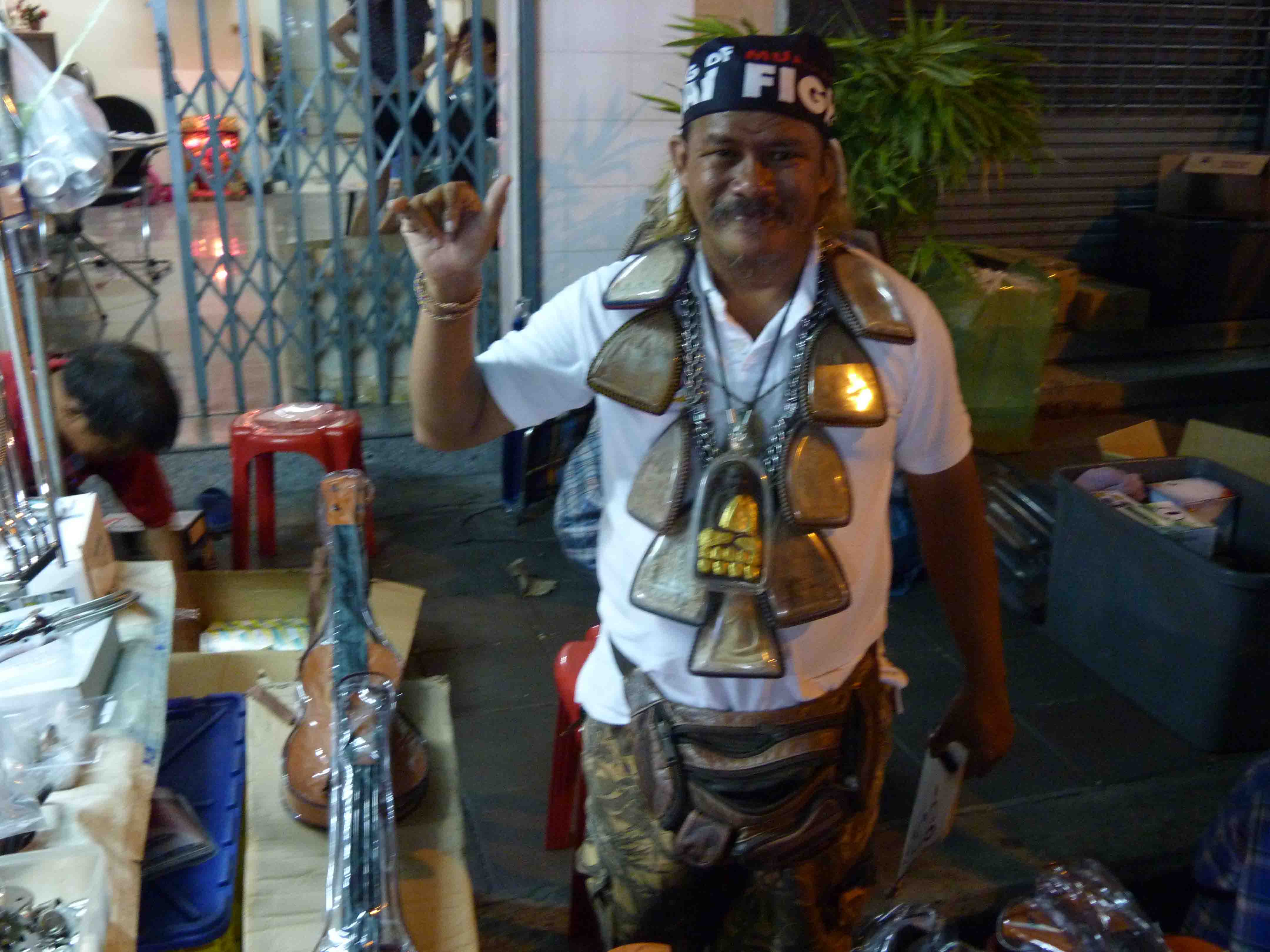Famous Thai Amulets
by Admin
Posted on 28-09-2023 02:28 PM

The very first thai buddha amulets were created with the intention to grant their wearers invulnerability. They were made from medicinal plants like wan – a group of flora believed to provide safety, and had depicted lord buddha, according to spurlock museum. They were later made with stronger materials like clay and limestone. When the 19th century hit, thailand’s buddhism community incorporated more hindu-brahman beliefs as well as art styles.
 From then on, sacred diagrams and symbols were placed onto the amulets, in addition to images of lord buddha. Image credit: เบญจภาคี-มรดกไทย
whilst we can still
find
some of these amulets created all those centuries ago, it’s rather difficult and expensive.
From then on, sacred diagrams and symbols were placed onto the amulets, in addition to images of lord buddha. Image credit: เบญจภาคี-มรดกไทย
whilst we can still
find
some of these amulets created all those centuries ago, it’s rather difficult and expensive.
This 103-page compendium, written in thai language, is a treasure trove of rare and famous pra pid ta amulets crafted by great masters of metallurgical alchemy, including world-famous sorcerer monks and lesser-known but equally powerful masters. With classic pra pid ta amulets from various masters and temples, this book serves as an excellent reference material for authentication and recognition of these rare and highly valuable amulets. It also provides a fascinating study of thailand’s grand pantheon of pra pid ta from a myriad of masters throughout history. But what sets this book apart is its enchanting presentation. It’s a fantastic pictorial study of cast metal ‘loi ongk’ statuette type buddha amulets and talismanic animist charms.
Thai buddhist amulets are something of an obsession in this buddhist land. Buddhist amulets are part of thai culture and you see them everywhere. Amulets, on the other hand, ward off evil and repel bad luck. The word itself comes from the latin amuletum, ‘to protect a person from trouble”. They can be gems, paintings, rings or pendants, animals, and even words. (talismans, a related form of what we call ‘charms’ bring luck). In most treasured form, the buddha amulet, is known as plah keang. During a deadly drought a thai monk went to the disaster area during a deadly drought to rescue a famous statue of gautama that was in danger of being abandoned.
Post date: 7/5/2018 author: david marcus reading time: 4 minute read illustrating the buddha sitting on a porcupine, this terracotta amulet is of the pan variety, a popular form that protects the wearer from danger. It resembles those made at wat bang nom kho, ayudhaya by luang phor (“reverend father monk”) parn, one of the ten guru monks worshipped in present-day thailand. Thai buddhist amulets like this one function for many thais as both reminders of buddhist teachings and agents of the buddha’s magical power. Conventional amulets depict the buddha in a state of meditation, while others feature images of prominent buddhist monks.
Thai Buddhist Amulets
34.
 4mb | tiff
unlimited seats
this license extends our regular royalty free / editorial license to an unlimited number of seats within the same organization. It is an additional license to the usage included within the regular royalty-free / editorial license that awards rights for a single person within the same company. The u-el license is applied only for the staff of the organization that holds the account. The number of copies allowed is unlimited for each designer/employee. Web usage
electronic items for resale/distribution: this license includes the right to use the media in webtemplates that are sold to more customers, screensavers, e-cards, powerpoint presentations or as wallpapers on cell phones.
4mb | tiff
unlimited seats
this license extends our regular royalty free / editorial license to an unlimited number of seats within the same organization. It is an additional license to the usage included within the regular royalty-free / editorial license that awards rights for a single person within the same company. The u-el license is applied only for the staff of the organization that holds the account. The number of copies allowed is unlimited for each designer/employee. Web usage
electronic items for resale/distribution: this license includes the right to use the media in webtemplates that are sold to more customers, screensavers, e-cards, powerpoint presentations or as wallpapers on cell phones.
Some monks have come out swinging against the so-called jatukam ramathep frenzy, saying it has turned the buddhist priesthood into an “amulet-blessing industry” despite the religion’s shunning of earthly possessions and materialism. Temples across the country are churning out thousands of the disc-shaped amulets, which are about the size of a coffee-cup lid and stamped with anything from images of hindu deities to former thai kings to buddha. To gain maximum “power”, the amulet and its ingredients have to be prayed over by monks for days. A top-of-the-range gold-leaf edition from a well-respected temple costs 10,000 baht (147 pounds) or more -- more than a month’s wages for many thais.
Source: meredith p. Though their origins lie far back in japan's folk traditions, omamori are very much a part of modern japanese culture. There's even an omamori vending machine at zenkoji temple, nagano. You can also find many omamori with cute characters on them. Some of these aren't sold at shrines or temples, but just regular souvenir shops. Some shinto and buddhist organisations disapprove of this dilution of omamori. Others happily sell character omamori. My local shrine sells rilakkuma omamori alongside the more traditional ones. You could even see the popularity of phone straps in japan as a non-religious extension of omamori culture.